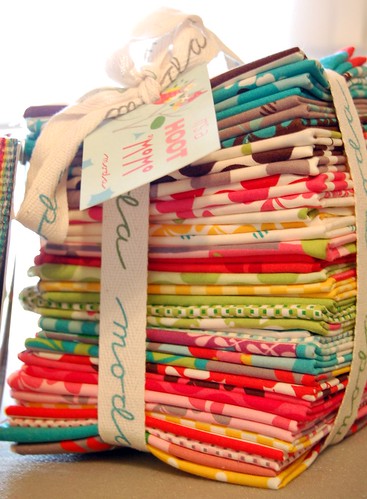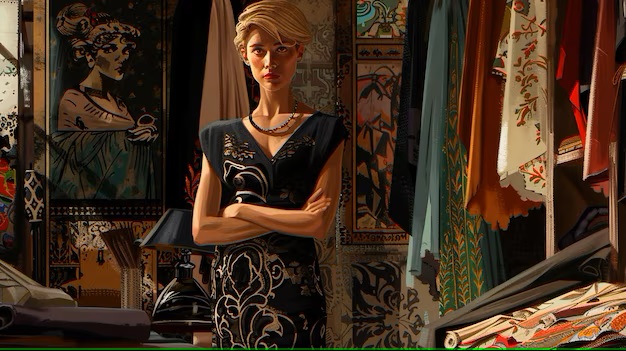Expert Tips to Excel in Quilt Contests and Make Your Creations Shine
Focus on originality in your creations. Judges appreciate unique interpretations of themes and innovative techniques. Experiment with unconventional materials or methods to stand out from the crowd.
Pay close attention to detail. Precision in stitching, finishing edges, and overall presentation can make a significant impact. Ensure that your piece is immaculate and free from any imperfections that might detract from its beauty.
Understand the judging criteria thoroughly. Each competition has specific guidelines; adhere to them strictly. Tailor your entry to reflect these requirements while maintaining your personal flair.
Engage with the community. Networking with fellow crafters can provide insights into current trends and techniques. Attend workshops, forums, or local meetups to exchange ideas and receive constructive criticism on your work.
Practice effective time management. Set a schedule for your projects, allowing ample time for revisions and adjustments. Breaking down the crafting process into manageable steps helps avoid last-minute stress.
Lastly, maintain a positive attitude. Being open to feedback and willing to learn from experiences will enhance your skills over time. Each participation is an opportunity to grow and refine your craft.
Choosing the Right Fabric for Your Quilt
Select materials that provide a balance of durability and aesthetic appeal. Cotton is a preferred choice due to its breathability and ease of manipulation. Consider 100% cotton woven fabrics for their stability and ability to hold up in intricate patterns.
Color and Pattern Selection
Focus on a harmonious color palette that resonates with the theme of the project. Utilize the color wheel to create combinations that are visually engaging. Avoid overly busy prints, as they can detract from the overall design.
Texture and Weight
Incorporate a mix of textures to add depth. Combining fabrics like flannel and broadcloth can enhance richness but ensure that weight is consistent across materials to avoid complications during the sewing process. Always prewash fabrics to check for shrinkage and colorfastness before starting.
Lastly, pay attention to the fabric’s weave; tighter weaves are more stable, while looser weaves can add flexibility. This careful selection will enhance the final piece’s quality and elegance.
Understanding Contest Categories and Rules
Thoroughly read the guidelines provided by the organizers for each category. Each competition has specific criteria defining acceptable styles, techniques, and themes. Different categories may focus on traditional methods or contemporary designs. Ensure your entry aligns with the requirements to avoid disqualification.
Categories Breakdown
Familiarize yourself with various groups available in the competition such as bed-sized, wall hangings, wearable art, or art quilts. Each division may contain its own subcategories, like hand-stitched versus machine-made or specific themes like nature or abstract. Research past winners to identify trends and expectations.
Rule Compliance
Pay close attention to submission deadlines, size restrictions, and any limitations on materials or techniques. Adhering to fabric types, color schemes, and previous participation rules can determine acceptance. Visualization documents, such as sketches or digital images, may also be required for certain categories.
Techniques to Enhance Your Quilting Skills
Experiment with different piecing methods such as foundation piecing or English paper piecing to diversify your approaches. Each technique offers unique benefits and can drastically change the quilt’s appearance.
Incorporate precise measuring tools like rulers or specialty templates to ensure accuracy. Proper measurements reduce fabric waste and enhance the overall quality of the finished piece.
Invest time in mastering basic hand stitches, including the whip stitch and blind stitch, for superior finishing and hand-sewn binding. This attention to detail creates a polished and professional look.
Practice your free-motion quilting by adjusting stitch length and tension settings on your machine. Regular practice leads to smoother movements and more intricate designs.
Participate in workshops or online courses led by experienced artisans. Learning from others and receiving constructive feedback can significantly refine your skills.
Utilize a design wall to visualize fabric placement before sewing. This allows for adjustments to color balance and pattern alignment, resulting in a more cohesive design.
Explore various quilting motifs through books or online resources. Learning new patterns can inspire creativity and innovation in your projects.
Stay organized by creating a designated space for your materials and tools. A clutter-free environment enhances focus and efficiency during the crafting process.
Document your projects and techniques in a quilting journal. Keeping a record of your progress aids in identifying strengths and areas for improvement.
Presenting Your Quilt for Maximum Impact
Utilize a clean, uncluttered backdrop to showcase your creation. This enhances focus on the artwork without distractions.
Lighting Techniques
- Position under natural light whenever possible; avoid harsh shadows.
- For indoor displays, use soft, diffused lighting to highlight textures.
Layout and Arrangement
- Display at eye level to create immediate engagement.
- Arrange pieces to guide the viewer’s gaze, creating a visual flow.
- Use props sparingly to accentuate without taking attention away.
Include an informative placard detailing your inspiration, materials, and techniques used. This contextualizes your craftsmanship and captivates the audience.
Regularly assess the positioning of your piece; slight adjustments can dramatically alter visual impact. Always solicit feedback to refine presentation methods.
Judging Criteria: What Judges Look For
Construct with precision. Judges evaluate the craftsmanship, assessing even the tiniest details. Seam allowances should be consistent, with no visible knots or threads. Proper tension while stitching makes a noticeable difference.
Design and Originality
Creativity counts. Original designs or unique interpretations of themes captivate judges. Incorporate innovative patterns or color palettes that stand out while maintaining harmony. Balance traditional techniques with fresh perspectives for an eye-catching effect.
Choice of Materials
Select fabrics wisely. Quality materials enhance the aesthetic and functional aspects of the piece. Judges appreciate fabrics that complement each other in texture and color. Consider durability and suitability for the intended purpose of the project.
Building a Network for Support and Feedback
Join local sewing groups or guilds where enthusiasts gather to share techniques, resources, and ideas. Engaging with peers in person fosters connections that can yield constructive critiques and encouragement.
Participate in online forums dedicated to sewing and patchwork. Platforms such as Facebook groups or Reddit communities allow you to ask questions, share your work, and receive feedback from a diverse audience.
Attend workshops or classes to meet like-minded individuals. Learning environments often cultivate camaraderie, leading to lasting relationships and opportunities for collaboration.
Follow experienced creators on social media. Interacting with their posts can provide insights and open up channels for advice from those who have successfully showcased their work.
Organize or join critique sessions with peers. Setting a regular schedule for sharing and discussing projects can provide valuable perspectives, enhancing both skills and relationships.
Make use of local fabric stores, which can be hubs for connecting with others. Many host events offering chances to mingle and exchange ideas with fellow craft lovers.
Collaborate on projects with other artisans. Shared initiatives can lead to new techniques being learned and can strengthen bonds within the sewing community.
Volunteer at events related to textile arts. This exposure can lead to meeting experienced participants and gaining insights into the competitive scene.
Share progress on social media and encourage feedback. Engaging with your audience invites constructive criticism and support, further expanding your network.
Q&A: Quilt contest tips
How can a quilter prepare a show quilt that meets size requirements and impresses quilt show judges?
To prepare a show quilt, a quilter should first read the rules of the specific quilt show, including size requirements, accepted categories, and whether it’s a juried quilt event. The quilt top must be squared, the layers of batting smooth, and all loose threads removed. Quilt show judges evaluate both the front of the quilt and the quilt back, so consistent thread colors and clean finishes help present your best work.
Why is adding a quilt label and hanging sleeve essential when entering quilt competitions?
When entering a quilt show, you should always add a hanging sleeve for display and include a quilt label on the back of the quilt. The label typically lists how the quilt was made, the quilter’s name, and the date. These details are essential for identification, especially in quilt competitions and exhibitions where entries are handled by organizers and quilt guilds.
What steps should you take before submitting a quilt to QuiltCon or other major quilt shows?
Before submitting to QuiltCon or any juried event, make sure your quilt is clean, pressed, and meets the guidelines provided in the submission packet. You’ll need to enter a show with an entry form, pay applicable entry fees, and often submit high-quality photos of the quilt front and quilt back. Modern quilter entries may also need to fit within categories like minimalism or improvisation.
Why might a quilt not be accepted into a show even if it’s technically well made?
Even if a quilt is made with skill, a quilt doesn’t always get accepted due to high competition, limited space, or a mismatch with the show’s theme or style. For example, entering quilt shows like those held at county and state fairs or by local quilt shops may emphasize traditional designs, while national shows seek amazing quilts with innovation and creativity in every element of the quilt.
How can quilters increase their chances of creating a winning quilt that meets show requirements?
Quilters can improve their odds of making a winning quilt by carefully reading the show guidelines to ensure the quilt meets all specifications. It’s important to square up the quilt, secure loose threads, and finish the edges cleanly. Whether submitting to a local county fair or a juried exhibit, shows often judge precision, creativity, and technique—especially when you make your quilt for a specific theme or category.
Why is it important to know if your quilt fits a category like minimalism before entering shows?
Before entering shows, you should know if your quilt aligns with the judging criteria of a category like the minimalism category. A quilt may be technically strong, but if it doesn’t reflect the style or intent of the category, it might not stand out. Award winning quilts often match the show’s artistic vision while also demonstrating technical excellence.
What are some tips to make your quilt show-ready when working on a quilt for competition?
Some tips to make your quilt show-ready include using quality materials, planning the design carefully, and focusing on even stitching—especially in free motion or detailed quilting. As you’re working on a quilt, double-check that every part of the quilt is well-executed. Many quilters make a quilt specifically with competition in mind, which helps them stay focused on standards.
What should entrants consider before deciding which show for your quilt to enter?
Each show has different requirements, so as an entrant, you should research whether your quilt fits the scale, technique focus, or style of the event. Some shows focus on traditional styles, while others spotlight innovation. Choosing the right show for your quilt—such as a county fair or a national exhibit—can impact whether you win a ribbon or gain exposure for your work.


